Time to switch gears. Besides, I have a feeling this one slipped under the radar for a lot of the Direct Market audience. Looking back now, six years later, it’s not at all surprising if it did.
The JESUSFREAK hardcover OGN, released in 2019 and illustrated by the mighty Benjamin Marra, had a fairly long gestation period. I first thought of it way back in 1999, originally conceived as a cross between From Hell (by Alan Moore & Eddie Campbell) and Chester Brown’s adaptations of the gospels that ran in the back of several issues of Yummy Fur. I was waist deep in writing superhero comicbooks and I felt like I wanted to balance my own personal creative scales with a project that was decidedly “non-superhero” in content (although, that descriptor of the final product is surely debatable), something that would require a ton of research. I even envisioned a trip to Israel to really get a vibe of the environment (even two thousand years after the supposed events took place). Unfortunately, that trip never happened.
Fifteen years later, I’d met Benjamin Marra (and recruited him to do some pages in the Captain Victory and the Galactic Rangers series I wrote for Dynamite), and my enthusiasm for the JESUSFREAK project was reignited. With Marra hopping onboard, we steered the book into a more “Pop Art” direction. That manifested itself on several levels. The first, I articulated in an interview I gave at the time of the book’s release:
“I actually thought we were telling an “untold tale”, so to speak. In terms of the mythology of Jesus, we’re told of his birth and then we jump right to a few years before his death. If he existed at all, there are several years there which are, as they say, undocumented and unaccounted for. Back in the day, when I first thought of this project, I remembered the tagline from the old Superboy comicbook -- “The adventures of Superman when he was a boy” -- and had the notion to apply that to Jesus’ “lost years”. His own personal awakening (for lack of a better term) holds within it a lot of inherent drama. Mix that with the times he was (supposedly) living in and I felt like I had everything I needed to tell a good, entertaining story. Which was always the goal, by the way.”
The next brainstorm I had was to present the entire thing in a specific storytelling style, one that would play to Marra’s strengths as well as tap into our shared influences. In this case, the aesthetic of the late 70’s/early 80’s Marvel Comics series, Master of Kung Fu (specifically the classic run of issues written by Doug Moench and masterfully drawn by Paul Gulacy and Gene Day). The verbosity, the density of captioning, the visual pacing, we leaned into all of it. There were instances where we were doing a flat-out homage to those comicbooks, right down to specific moments from specific issues. From that same interview…
“Marra and I just love those comics (and those creators). It’s true that the 1970’s was a very experimental time in mainstream comics, and sometimes the experiment ended in failure. But even in those failures, there was interesting work being done. Not to mention subversive work. These were still kids’ comics, after all. For me, personally, I’m a freak for genre-splicing -- or, in this case, aesthetic-splicing -- so taking what is ostensibly historical fiction and merging it with a certain type of exploitation comic made all the sense in the world.”
Here's the introductory text from the book itself:
* * * * * * * * * * * * * * * * * * * * * * * * * * * * * * * *
Some say context is everything. So, full disclosure: This is not a religious story.
We thought it might be best to get that out of the way right at the top, so there’s no misunderstanding whatsoever. We’re not adapting the gospels. We’re not espousing any particular point of view. We know the world is full of various religious persuasions and denominations. Your mileage may vary when it comes to their validity, but they’re all out there and they’re all a part of the vast mosaic that is the human race.
There are plenty of existing stories that deal with religion head-on. This is not one of them. Whatever you believe in your own life, more power to you. But this book is not meant to provide any deep, spiritual insight into anything of a religious nature. You want spiritual insight? Read the Bible. Read the Torah. Read the Quran or the Vedas or the Buddhist Sutras. Go to church. Go to temple. Meditate. Do whatever you need to do. But you’re probably not going to find any answers here.
A fair bit of research went into the making of this book. Personally, that was part of the appeal for doing it. There are times when a research-heavy project is just what the creative mind desires and this was one of those times. But our book cannot -- and should not -- even be classified as “speculative fiction”. Certainly for the sake of verisimilitude, we strove for a degree of historical accuracy, but not at the expense of accessibility.
For instance, in the text itself, we refer to our lead character -- by name -- as “Jesus”, choosing not to call him by what was considered his more historically accurate name, “Y’shua” (of which “Jesus” is the English and Greek versions of the original Hebrew name). There was some back and forth on this one, but ultimately we chose accessibility. It’s tough to have 100% certainty when it comes to details like this. It might be a bit of a gamble, but as comicbook creators, gambling is what we do.
Readers should also assume that the primary language being spoken -- by Jesus specifically -- is Jewish Palestinian Aramaic, the common language of Judea in the First Century. Some historians believe that Jesus also spoke Hebrew on occasion, but again, we felt like spotlighting these linguistic distinctions -- within the story itself -- would only end up obfuscating the intent of the story we’ve set out to tell. Again, accessibility bring a primary factor.
So, clearly, we’re not here to be scholars. We’re storytellers.
And, as storytellers, we try not to let anything get in the way of a good story. Certainly not “the truth”, whatever that is in this particular instance. There are times when we lean pretty heavily into moments of pure symbolism. There are other times when we dive head-first into surrealism. Whether or not Jesus -- the man or the Christ -- even existed is completely irrelevant to the existence of JESUSFREAK. We’re just here to put on a show.
* * * * * * * * * * * * * * * * * * * * * * * * * * * * * * *
Despite a relatively low-key ramp up to the book’s release, its subject matter attracted a certain kind of attention. I don’t recall if I was surprised or not that it ended up as a segment on Fox & Friends, during which JESUSFREAK was called out and decried for its “blasphemous” treatment of the titular character. Then again, Fox has never been known for its appreciation of nuance. On the other hand, I can’t deny that Jesus does his share of kung fu in the story. He experiences a few psychedelic trips. He fights Satanic lizard men. The book is fairly violent. But it was a violent time in human history.
Aside from the screen caps below, I couldn’t find actual video of the segment itself, but it made enough of a stink at the time that Newsweek picked it up… which you can read right here.
I was even able to comment on their bullshit in the same interview quoted above:
“… Jesus was always inexplicably depicted as Caucasian. Ours is culturally and ethnically accurate. I’m sure the same talking heads on Fox & Friends would be just as outraged by the fact that there are no white people in our book. Why would there be? That alone might be tough for some folks to swallow. But that’s their problem, not ours.”
Now, that brings us to the depiction of the Jesus character. I was committed to the idea of being historically accurate. The literal “white-washing” of Jesus by European artists had solidified his image -- in the Western world, at least -- in a way that, to me, was completely ridiculous. Obviously, the “historical” Jesus wasn’t Caucasian. Not on any level whatsoever. Even Chester Brown’s interpretation wasn’t completely accurate to my eyes. So, with JESUSFREAK, I wanted to really lean into a visual depiction that was true to the region of the world from which he sprang.
Initial discussions with Benjamin Marra led us to this initial, promo image for the book. I thought Marra nailed it perfectly here. There was a real mystery and a heroism to this version of Jesus and he was obviously -- and correctly -- a person of color.
Then, as actual pages started rolling in, I noticed a definite difference in the way Marra was now drawing the character. He was a little more chiseled. His hair was a little straighter. He was a little less ethnic (to my eyes). Maybe a little more Willem Dafoe in The Last Temptation of Christ… admittedly, a movie I loved and, in some ways, served as its own influence on the book we were doing. But I can’t deny that Martin Scorsese’s casting choices were -- while inspired from a pure talent point of view -- straight out of Hollywood. I tried to mitigate this, somewhat, by instructing colorist, Brad Simpson, to color Jesus’ skin in the appropriately darker hues. I’m not sure if my ambition in that regard truly came across in the final product, but Marra and I were creative partners and I went with his artistic decision.
Marra explained his side of it in a joint interview we did to promote the book:
Ben Marra: Joe and I talked a little bit about the design of the character in advance. I think I may have made him a little more beautiful than Joe had originally wanted.
Joe Casey: [Laughs]
BM: It just happened organically for me. I did a few sketches in advance and then started drawing the book. Joe actually provided layouts to work off of. It was this new process that was really fun for me.
JC: I don’t know if I’d call them layouts. They were stick-figures.
BM: [Laughs] Yeah but I had a really good time.
So that brings us to process. We created JESUSFREAK a little differently than the usual production line method. I didn’t write a script, per se, in so far as I never typed one up to give to Marra. Instead, I employed an approach pioneered by the late, great Harvey Kurtzman but that I was personally made aware of by one of my favorite writers from the 1980’s, Mike Baron, and how he wrote his comicbooks back in the 1980’s, be it Nexus or Flash or Punisher. He would basically draw crude layouts with dialogue handwritten in the margins. I have a few of these in my possession, and they’re fantastic. So, after discussing it beforehand with Marra, that’s exactly how I wrote JESUSFREAK. I laid out every page, Marra was free to “adapt” them however he saw fit, and I think the results speak for themselves. It was a very organic way to make comicbooks. Here’s some examples below, from inspiration (in some cases) to my “script” to finished pages:
So in case you’re curious… JESUSFREAK is still out there, in the world, in print.
Joe Casey
USA





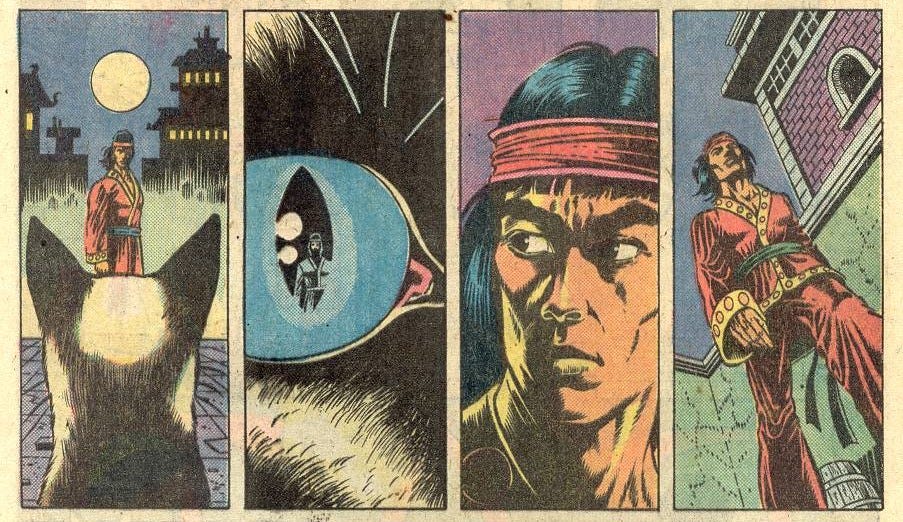
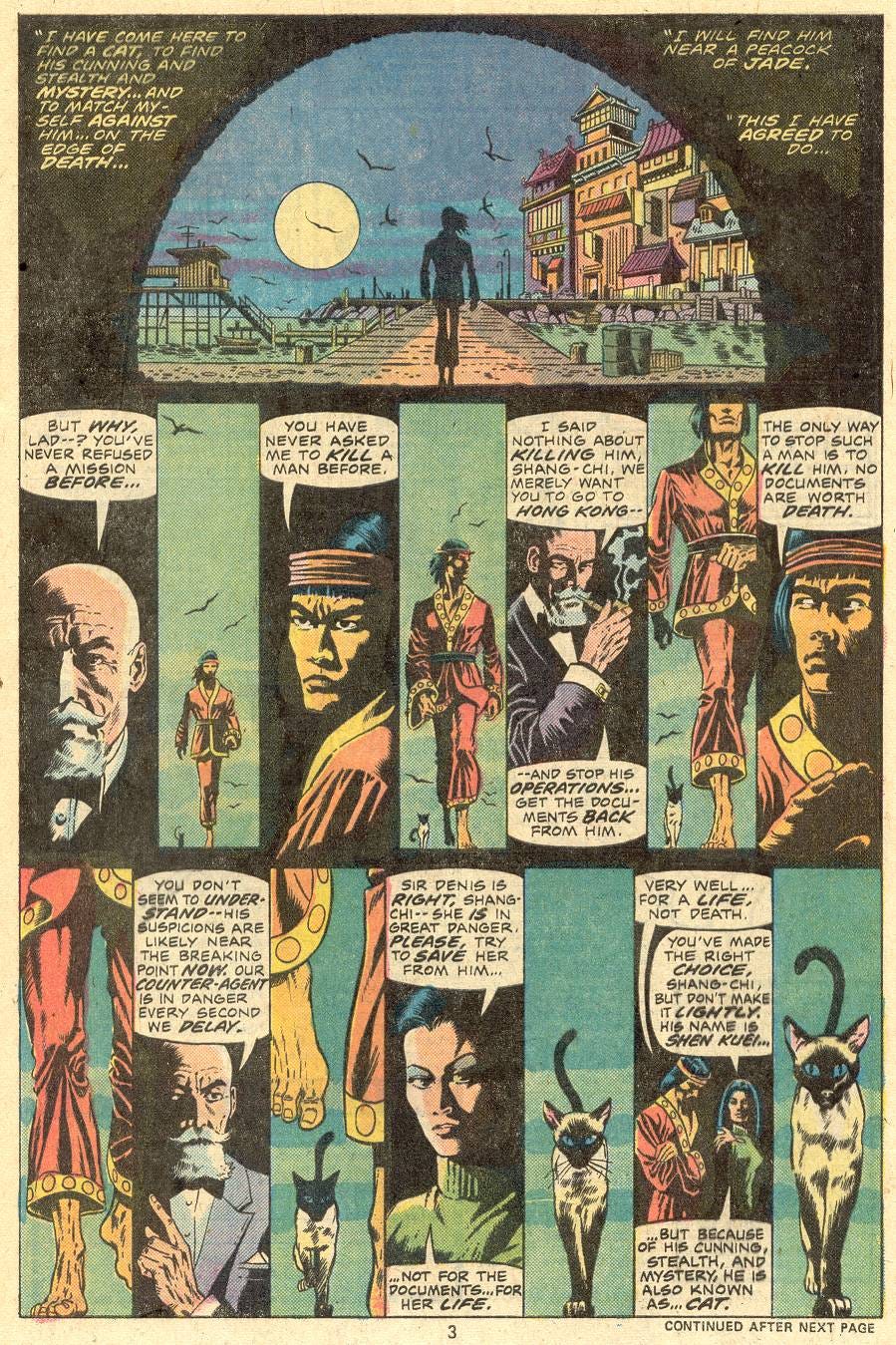
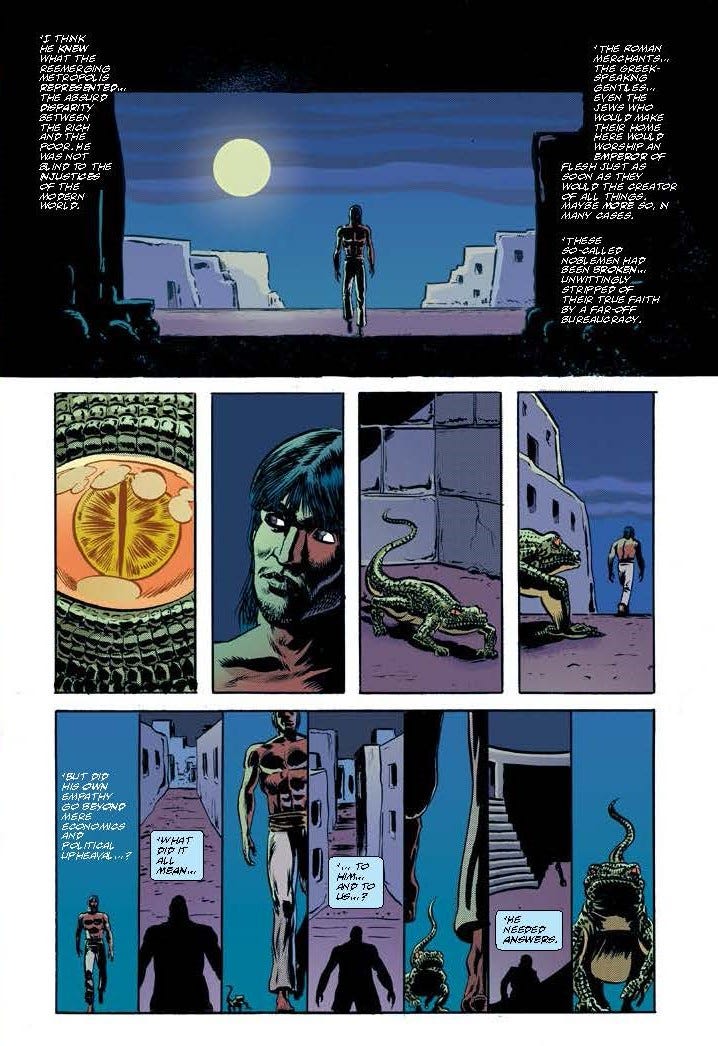


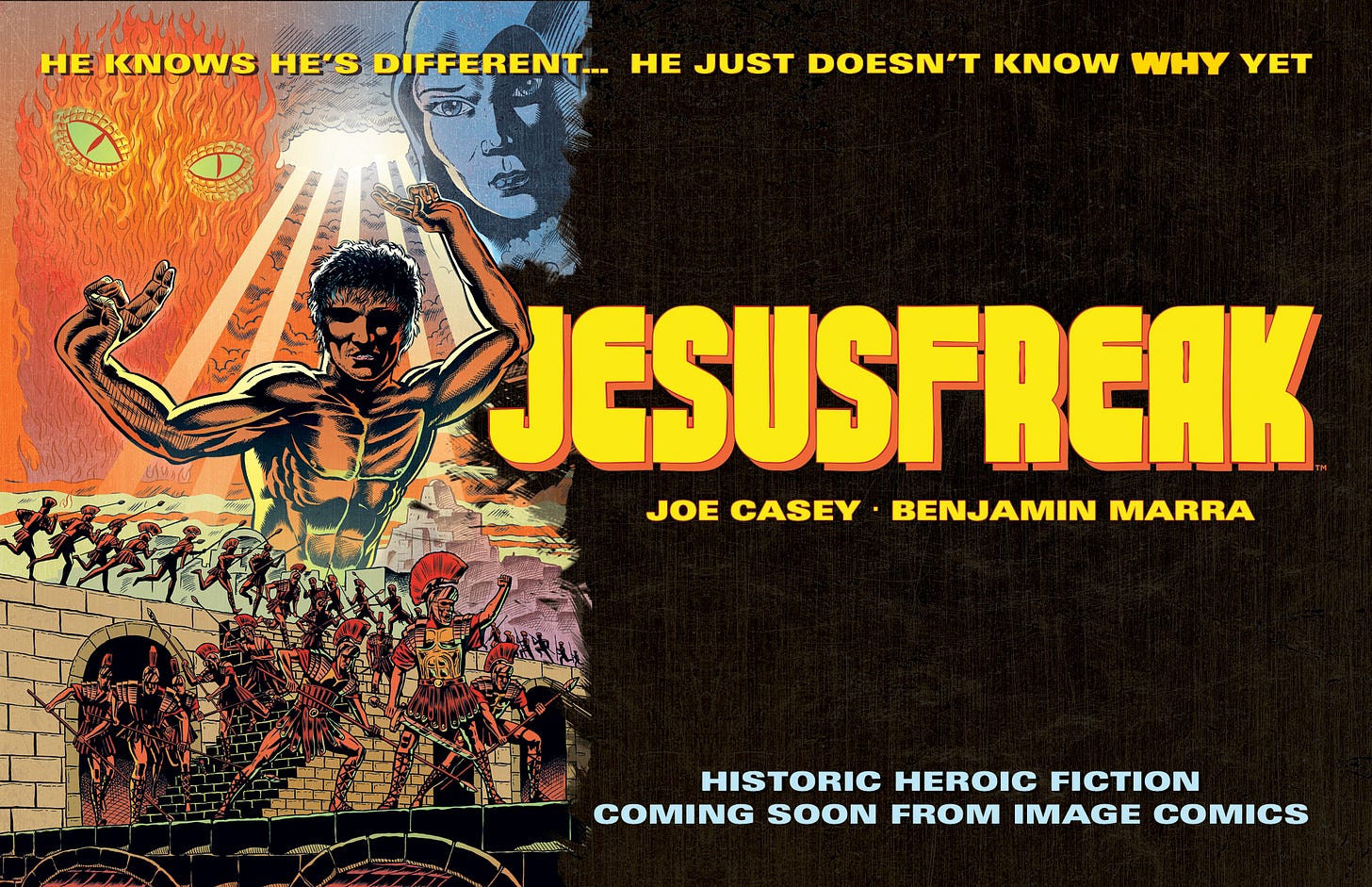
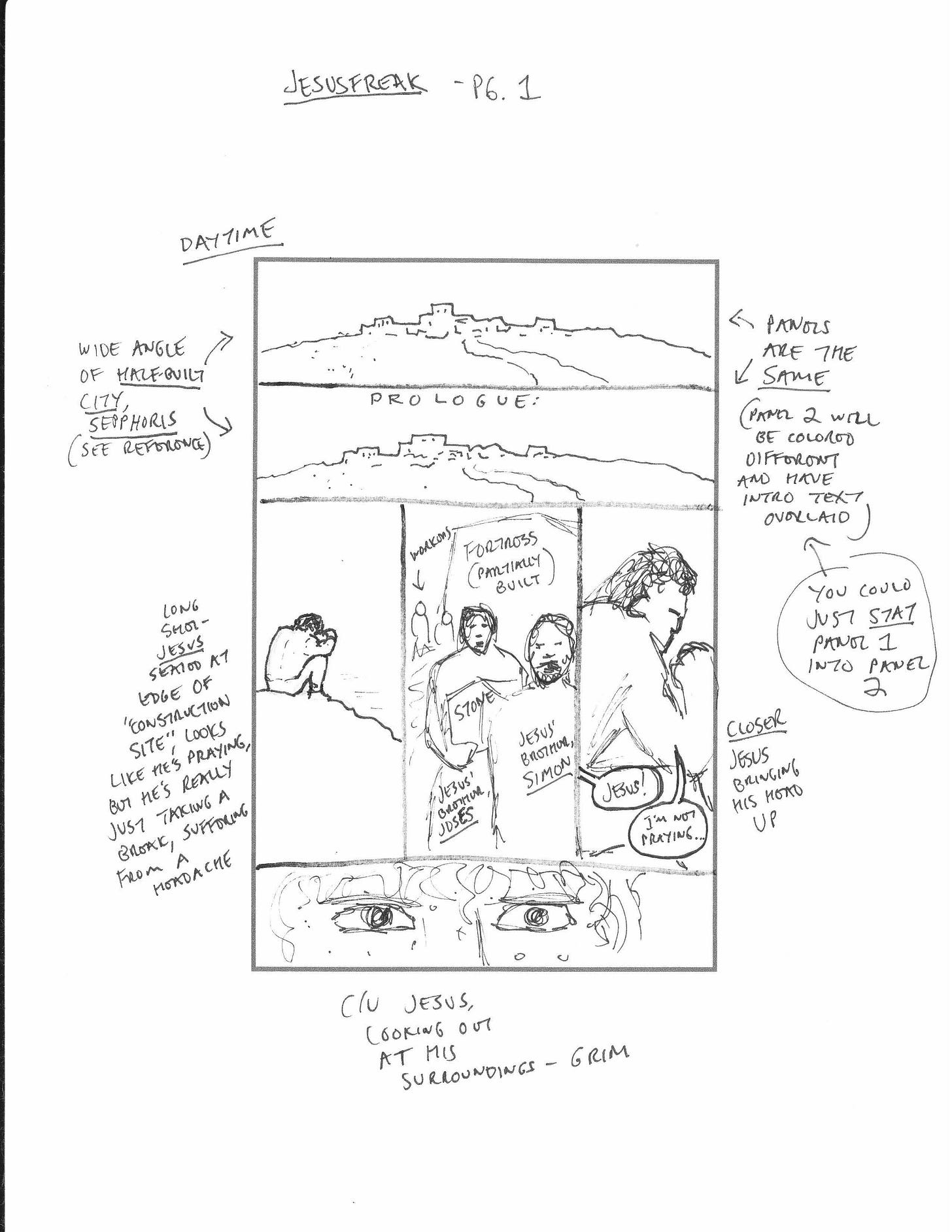




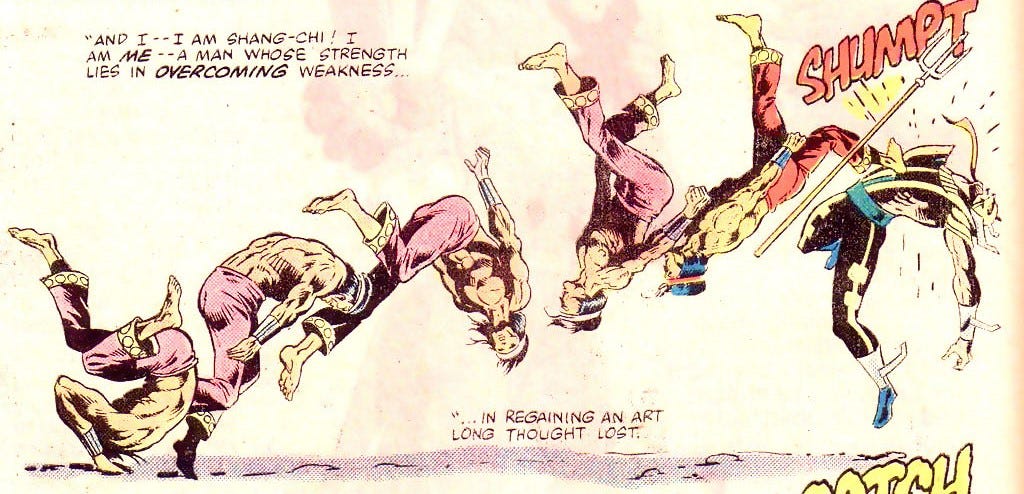
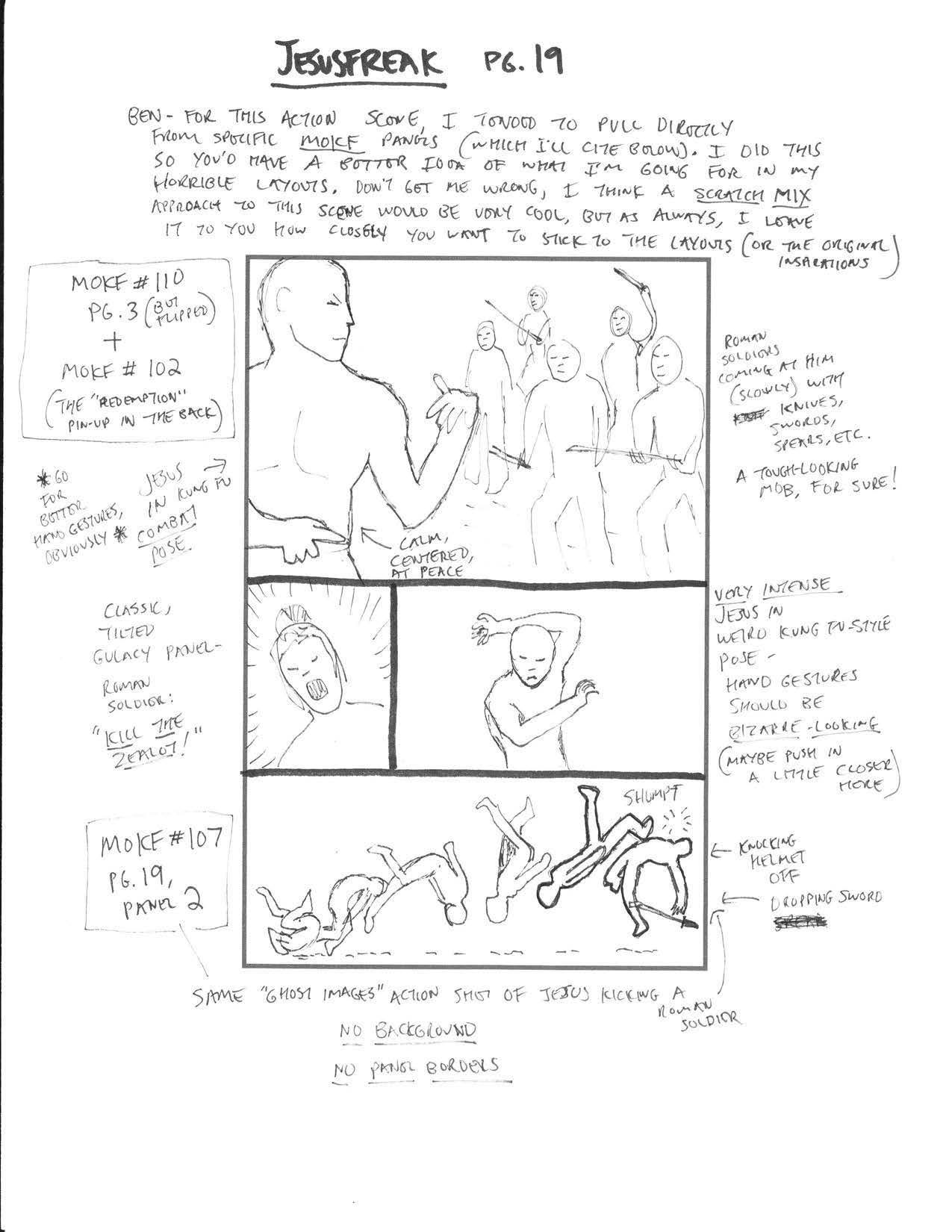


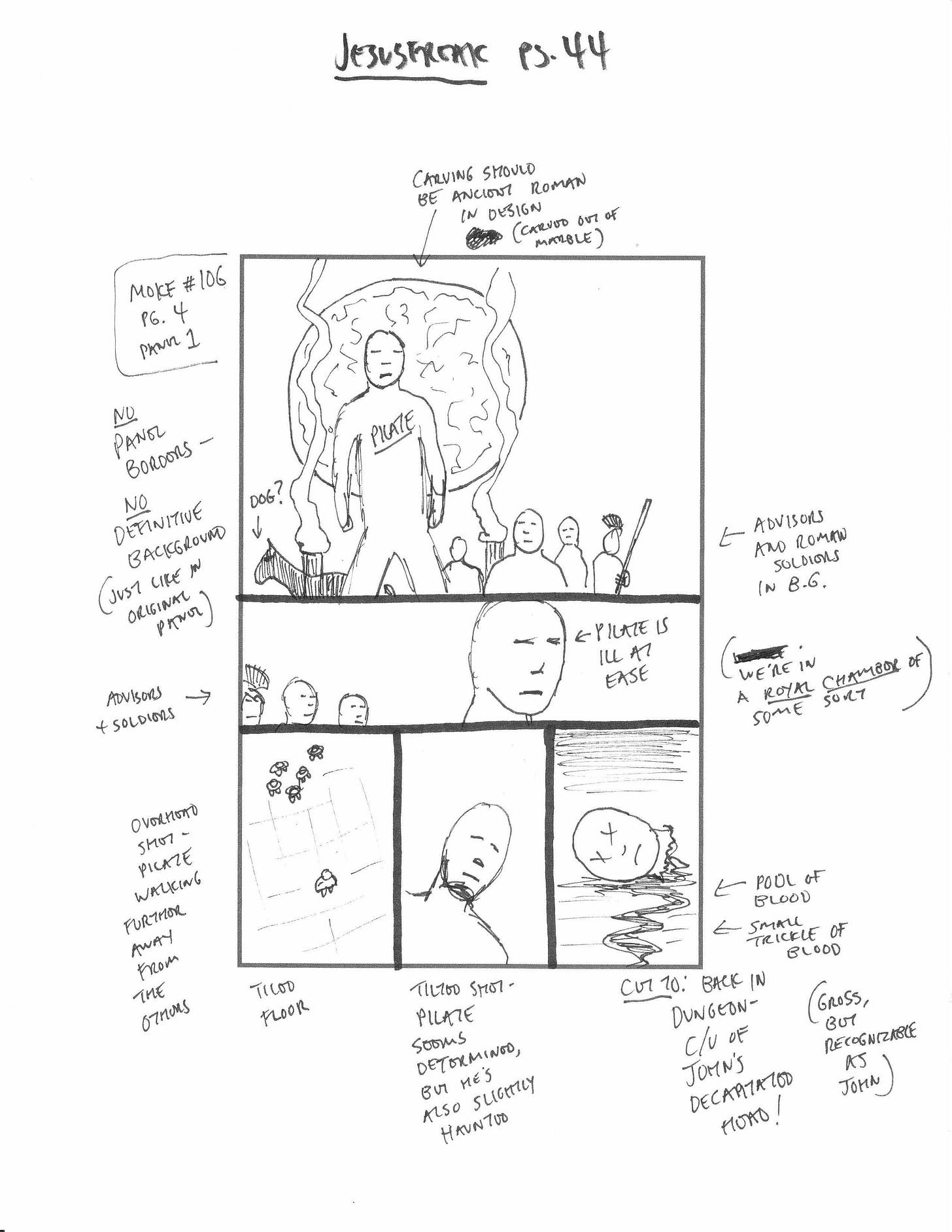

This is so cool. And the Fox News reaction - hilarious. Congratulations on that! Love the concept.
I’m really enjoying these columns and I really like with this one how you’re blending your present day reflections along with the historical interviews and publicity. Keep up the great work!